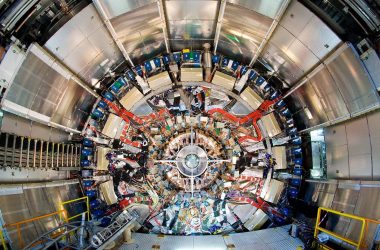A mysterious particle known as an anyon has been created using a quantum computer, and it possesses the unique ability to remember its past. This discovery could have significant implications for the performance of future quantum computers.
Unlike other particles such as electrons or photons, anyons keep a record of their previous locations, making them fundamentally different from any other particle known to us. This property was first observed by physicists in the 1970s when they discovered certain quasiparticles that exist only in two dimensions, which they later named anyons. Quasiparticles are not actual particles but rather collective vibrations that behave as if they were particles.
When anyons are swapped, their properties are profoundly affected, and the number of swaps determines how they vibrate. In particular, a type of anyon called a non-Abelian anyon retains a memory of the order in which it was swapped, similar to how the strands of a braided rope retain their crossing order. However, anyons interact through the phenomena of entanglement, where particle properties are intertwined through space, as opposed to the physical interaction of rope threads.
The inherent memory and quantum nature of non-Abelian anyons make them highly attractive for quantum computing purposes. However, until now, these elusive particles had never been experimentally observed.
A team of researchers, led by Henrik Dryer at quantum computing firm Quantinuum, claims to have successfully created non-Abelian anyons. They accomplished this by developing a new quantum processor called H2, which utilizes ytterbium and barium ions trapped using magnetic fields and lasers to create quantum bits, or qubits – the fundamental building blocks of quantum computers.
To mimic anyons, the researchers entangled these qubits in a formation known as a Kagome lattice, a pattern commonly found in traditional Japanese baskets. By adjusting the interactions between the qubits in a way that is equivalent to moving the anyons, the team was able to detect and confirm the distinct changes in the anyons’ properties that depend on the order of swaps.
This breakthrough serves as the first convincing test of non-Abelian topological order using a quantum computer, according to Steven Simon at the University of Oxford. Additionally, the ability to manipulate anyons using a quantum computer is valuable for researchers seeking to deepen their understanding of this unusual state of matter.
However, not all experts are convinced that Quantinuum has truly created non-Abelian anyons. Jiannis Pachos from the University of Leeds argues that it is merely a simulation rather than a real creation. Dryer, on the other hand, claims that the quasiparticle nature of anyons means that simulations and the real thing are indistinguishable.
Topics:
- quantum computing
- particles












